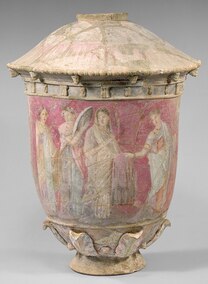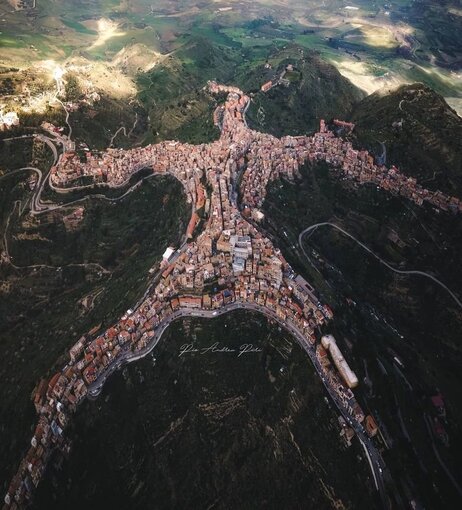 In the eastern part of Sicily is a hilltown which, when viewed from the air, resembles a primitive depiction of a man. Others might say the shape resembles a starfish clinging to the mountain. Centuripe (called Centuripae by the Greeks) is in the province of Enna, located 38 miles from Enna in the hill country between the Rivers Dittaìno and Salso, with a wonderful view of Mount Etna. Centuripe's roots extend back to the 5th century BC, when it was a Hellenic city. In the first century BC, Cicero claimed in his writings that the town had a population of 10,000 and was one of the largest and richest cities on the island of Sicily.  In the 2nd and 3rd centuries BC, a uniquely beautiful type of ceramics dubbed Centuripe Ware originated here, with tempura paintings applied to fired clay. Partly destroyed by Frederick II in 1233 (after which most of the inhabitants moved to Augusta), the city’s ruin was completed by Charles of Anjou. It was later rebuilt by Francesco Moncada, count of Adernò (now Adrano), and was ruled by his descendants as a county until 1813. Known as Centorbi until 1863, it passed to the Kingdom of Italy in 1860 and was the scene of heavy fighting in World War II.  Nighttime view of Mount Etna from the town Nighttime view of Mount Etna from the town Remains of the classical city include Hellenistic houses with wall paintings, baths, and cisterns, and several substruction walls, mostly of the Roman period, on the steep slopes. Centuripe’s civic museum and the Palazzo Comunale exhibit Hellenistic terra-cottas, finely painted vases of local manufacture, and relics from a large number of excavated tombs in the area. Agriculture (grains) is the town's mainstay, caves with sulfur and salt deposits, and quarries for chalk and marble are other resources. Nearby are local mineral springs. This sleepy town is well worth a visit, if only for the stellar view of Etna from it's Castle. --Jerry Finzi |
Categories
All
Archives
May 2023
|






 RSS Feed
RSS Feed
